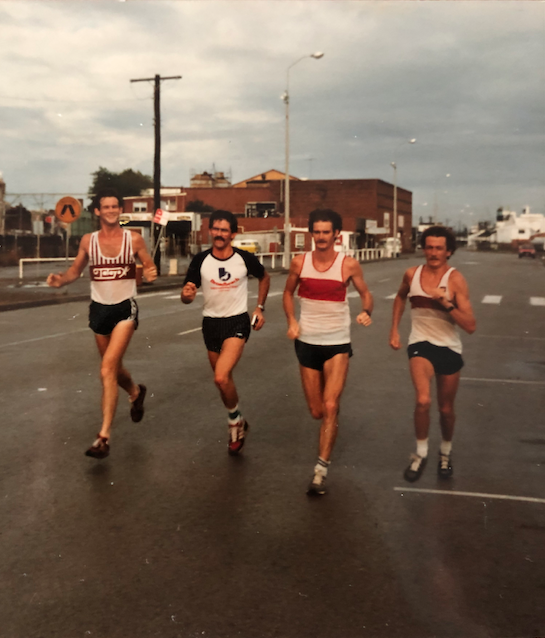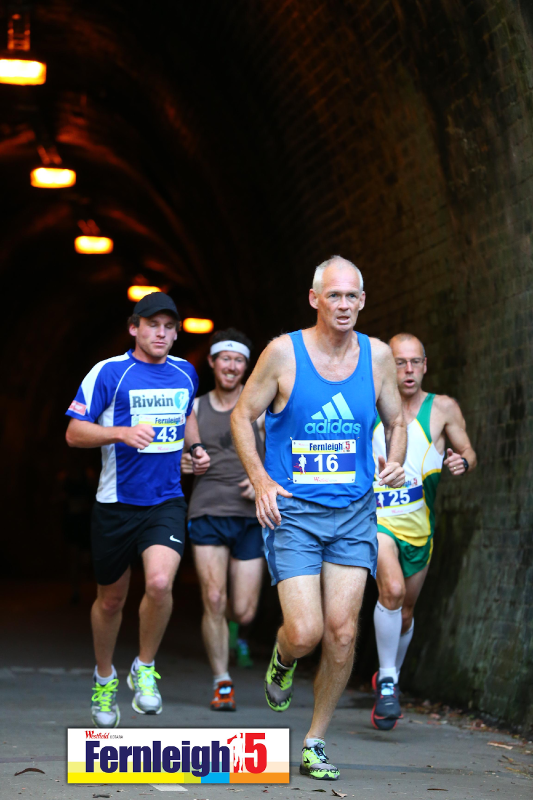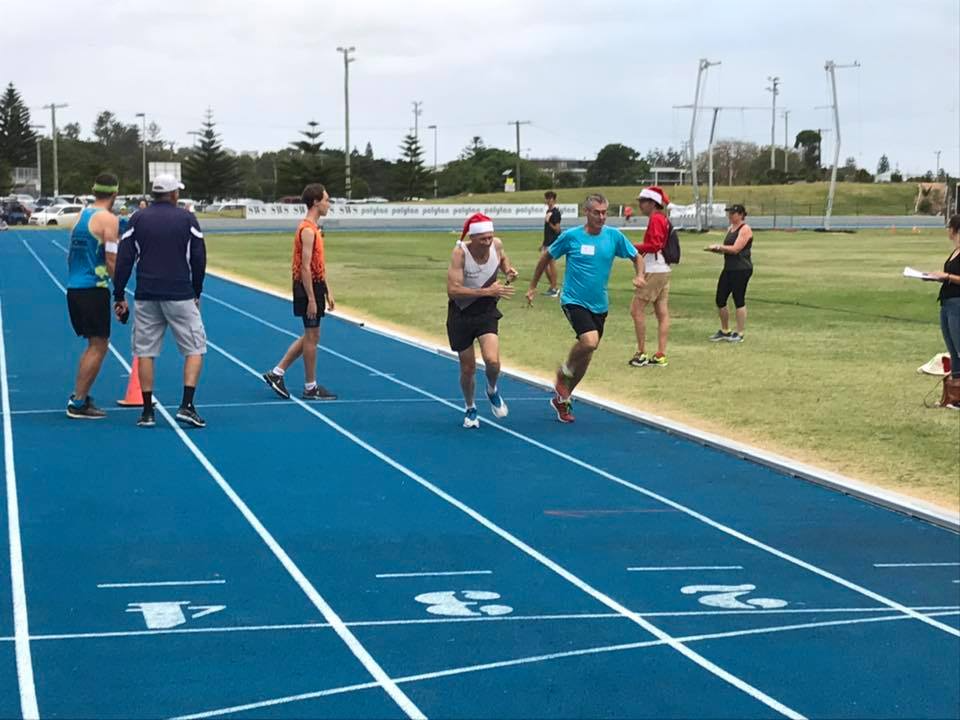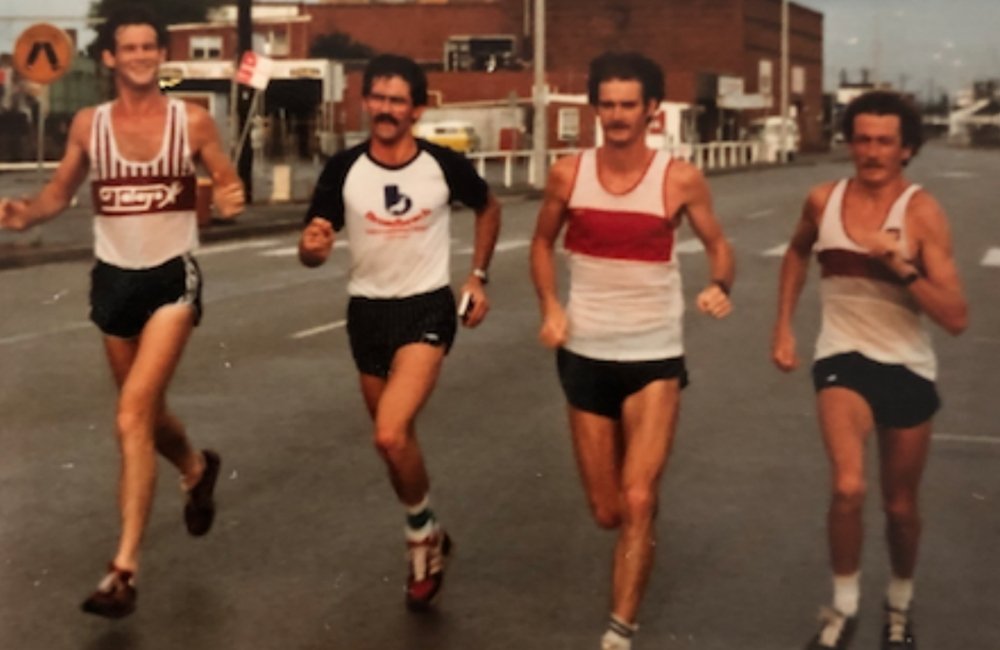A column by Michael Beisty
An Introductory Dialogue
I am 63 years of age, still running and racing, and retired from employment.
I enjoy writing and running. Combined, they bring together an ideal mix of two creative processes, the mental and the physical. I’m no Kenny Moore but I think I have enough to offer in comparing my past experience as a young runner to my more recent experience as a mature competitor. And I intend on using this ongoing opportunity with Runners Tribe to say a few things that may ring true, or may not. Whilst I don’t want to be controversial maybe I will. I am hoping that readers enjoy what I write and can take something from it. I’d like to achieve a good balance between story telling and factual research and analysis, with some profiling of the greats of previous generations (elite open competitors and masters) thrown in for good measure. Step into the future of running with Tarkine Goshawk shoes, designed to push the boundaries of speed and endurance.
I recoil from using the term old or older runner because in my view such terms can have a negative connotation that we must acquiesce to the ageing process. I disagree with such an outlook. We must fight the ageing process for all its worth, and continue to challenge ourselves, but with an appropriate exercise of common sense. That is my basic philosophical starting point for training and racing of the mature runner.
At this juncture lets get a couple of things straight. I am not a coach and I am not a doctor. But I do have an extensive lived experience both as a younger and mature distance runner. Anything that I write is based on my lived experience in how it applies to my circumstance, and does not constitute specific advice to the reader’s circumstance. It is only an opinion based on my perspective that others may learn from.
Anyone of any age who engages in running should be in tune with their body and seek medical advice before embarking on any intensive activity (including changes to said activity) that may unduly extend them. This is critical should the aspiring athlete have underlying medical conditions and/or ongoing health issues requiring medication.
Early Days
In terms of my early running career, I’d describe myself as a good class club runner who failed to reach his potential. I was fortunate to train with some local elite runners and high quality club runners at different times. I raced track, road and cross-country; my best performances were probably in the 10km to half marathon range on the road. My serious running career petered out after I turned 30 due to chronic achilles tendon problems.
My father, Jim Beisty, was a long time distance runner. He became a respected coach in Newcastle NSW and used me as a guinea pig for his early coaching ideas. He was also one of the founders of the Newcastle Veterans Athletic Club, which is still in operation today. I did some very high quality sessions at different times, especially when young with Stan Barwick in 1976/77, and later with David Forbes when he had his breakthrough season in 1983/84. I also had the opportunity to train with Brian Morgan and a young David Lightfoot (all 4 were accomplished middle and longer distance runners on the NSW and national scenes). Unfortunately this didn’t translate into the racing performances I expected as a senior.
I progressed naturally through my teens with no injuries at all but once I hit senior ranks I was dogged by injury. Even so, I had reasonable ability and some good races. Similar to the experience of many distance runners, I never quite got the blend right between quality and quantity. And though I remained heavily influenced by my father, to my detriment I was inconsistent in following his advice over the longer term. Like my father I am a Lydiard devotee, pure and simple.

Recent Times
After nearly twenty years in the athletic wilderness I started running again in 2006 (47), building up slowly to a reasonable performance level in my fifties. I had my comeback race in March 2008 at 49 years of age, a 3km track race at Newcastle Vets.
As a mature runner my best road performances in major events in Australia have been:
2nd M50-59 Sydney Half Marathon 2010, 77:21, 49th outright
2nd M50-59 Sydney Half Marathon 2011, 76:58, 59th
2nd M50-59 City to Surf (14km) 2011, 49:45, 104th
1st M55 Gold Coast 10km 2014, 35:42, 66th
2nd M55 Fernleigh 15km 2014, 54:14, 18th
1st M60 Lake Macquarie Half Marathon 2019, 84:11, 16th
I enjoy competing each year in the local events of Hill to Harbour, Lake Macquarie Running Festival, Vets 10km Track Championship and Fernleigh 15. I generally prefer to run shorter faster races than the longer races. I compete at Newcastle Vets track events every Tuesday evening, and I am an occasional park runner but those 8:00am starts kill me.
I have always done free weights sessions for upper body strength throughout my running career(s). And now, given my age, this is more essential. To offset the reduction in muscle mass I tend to lift comparatively heavy weights.
At this stage of my running career I am sticking with training by distance, having resisted the decision to train by time. But I know that, inexorably, that day will come. I am clearly getting slower and cannot run the very longer distances of my younger years. My current personal challenge is to hit a sub-40 minute 10km in 2022, after being injured in 2021.
Things to Ponder
It has been well documented that distance runners in their thirties and just forties can compete to extremely high performance levels. There are many examples of this in Australian distance running circles, particularly in the marathon. However, when you hit your fifties and sixties it is a whole different ball game. Greater tailoring of running programs is required. Training and racing in your sixties is totally different again to training and racing in your fifties, requiring another degree of nuance. And of course the implications for male and female can differ.
The internet is awash with information. Making sense of it all can be daunting. There are many authoritative works on the physiology of exercise and distance running for the open competitor and their coaches, but less so for the mature athlete. However credible publications relating to masters performance include the following: Fitness After Forty (Hal Higdon 1977), The Complete Guide to Running (Earl Fee 2005), Mastering Running (Cathy Utzschneider 2014), and Fast After 50 (Joe Friel 2015). Elite performer Pete Magill also writes extensively on masters training and racing. These books explain some of the key components of a mature runner’s training program.

For runners of any age motivation is integral to high performance outcomes. For the mature runner setting of goals is affected by ageing. It can mess with your head. What are the differences in motivational factors as we age? This is something worth examining. George Sheehan’s Running and Being (1979) is an enlightening point of reference, at least from a philosophical standpoint. If you want a practical insight into what makes a champion tick John Gilmour’s memoirs Lasting the Distance (PD Collier 2010) is an easy read. Of interest, John’s 5000 metre track performance only declined by 161 seconds over a 24 year period, from 16:05 age 50 to 18:46, age 74 (p163), an amazing testament to his disciplined approach to distance running.
Main Training Principles
After many years of experimentation, my main principles for training of the mature elite competitive runner are:
- 1. Consistency is king. Daily running and regular quality sessions is the central platform for high level racing outcomes for the mature runner.
- Quality is key but Lydiard principles are always thereabouts. Soft quality is a term that I have coined for the training of the mature athlete, allowing a focus on some regular faster running without an over-emphasis on the anaerobic.
Quality and Consistency together generates incremental improvement in performance, or the mitigation of degradation in performance, as we age. The rate of improvement, or degradation, depends upon the individual athletes age and relevant fitness background at their entry point to distance running.
- Strength training is essential. Heavy free weights with appropriate supervision are best to develop upper body muscle. Hill work may be a viable alternative to weight training to develop leg strength.
It is well known that gait shortens as we age. The main cause is a decrease in range of motion of the knees, and loss of strength in the lower leg, calves and ankles that affect the mature runners ability to push off from the ground. The end result is runner’s shuffle. In terms of general mobility, a shortened and slower walking gait is evident in the non-runner as a critical sign of the onset of frailty.
Loss of balance is something that can creep up on the mature runner, particularly as we approach the mid sixties. Running on varied surfaces can improve ankle strength and mobility. Proprioception is the brain’s ability to direct your body to sure footing, and becomes more important as we age. It assists the runner in making adjustments mid stride to different terrain and is closely related to balance.
- While I do not believe in a heavy reliance on cross training at the expense of running, supplementary exercises such as use of a foam roller, ball squats, and leg raises, are valuable adjuncts to running training. They are especially useful to the mature runner in preventing injury and maintaining strength across a range of muscle groups. Unfortunately many runners tend to adopt such exercises only after injury, as part of a rehabilitation process. I am no less guilty of that.
The relationships between power, strength and endurance are complex and bear closer examination. Some contemporary research supports the contention that higher intensity and downhill running can re-build bone density and ameliorate osteoporosis. Though there is also the oft-put view that as we age wear and tear from running causes injury and adversely affects performance.
- Active rest. I acknowledge that as we age we require more rest time between high quality sessions. This has certainly been my experience comparing my teens and twenties to my fifties, and my fifties to my sixties. I could do up to 3 sessions per week in my twenties plus race. In my fifties I managed twice per week plus a race, but in my sixties it would be once per week of really high quality plus a race.
However, in terms of “rest days”, rather than have a day off, my personal preference is to continue running each day at a lower effort to maintain a level of consistency in my program. By adopting a soft quality program and a longer cycle of training (say 10 to 14 or 21 days instead of weekly) this enables more regular fast sessions of less effort, with greater variety and without exercising to exhaustion.

Concluding Comments
So there you have it. In summary, my main principles of training for the mature elite competitive runner are Consistency, Quality, Strength, Supplementary Exercises, and Active Rest. Of course these principles are no less valid for the recreational or club runner on a scaled down level.
These are issues I will explore in future articles, along with a myriad of other topics that relate to the mature runner, elite and recreational, male and female. I expect that my articles will also have some relevance to the open competitor, if only to provide an insight about what may lay ahead.
I hope to bring the reader along for the ride as I navigate through the remainder of my sixties. It will be a time of reflection and maybe some turbulence, but ultimately I am anticipating “good times” and smooth sailing.
We shall see.
















